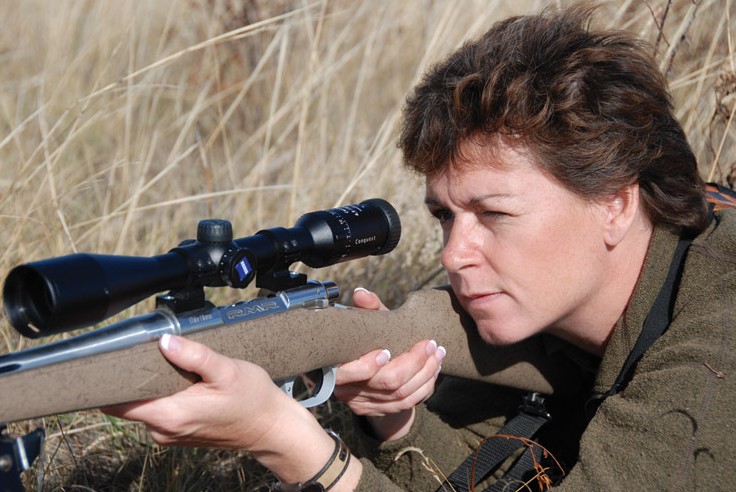4 Things to Consider Before Buying a Gal a Gun
Advertisement
No matter how well intentioned, handing down a rifle is rarely an act of kindness if the recipient is female. As with many items both men and women use, rifles need to be somewhat gender specific in their design. That’s not to say you should spend a small fortune on a specialized rifle so you can introduce a woman to shooting and hunting. But if she takes a liking to the sport, at some point she’ll need a gun of her own. And when that time comes, here’s what you need to consider.
Recoil
Bring up women’s rifles with a group of testosterone-fuelled male shooters and the conversation will instantly turn to recoil. They’ll reason that women, being the weaker sex, most certainly can’t handle the recoil that a man can. This is a common misconception. In truth, physical size has very little to do with recoil tolerance. Indeed, many men can’t handle recoil, but a certain chromosome prevents them from admitting to it.
Advertisement
I know many women, on the other hand, who can comfortably shoot so-called man-sized cartridges. If forced to throw out a list of women-friendly cartridges, I would list the .260 Remington, .270 Winchester, 7mm-08, .308 Winchester and .30-06 Springfield. With the right shooting instruction, a proper-fitting rifle and experience, however, cartridge selection becomes far less of a consideration. Obviously, any inexperienced shooter should start with light-recoiling rifles, and that applies to both genders.
Fit
Where men and women do differ is in rifle fit. Typically, women have a shorter length of pull. This even applies to women of larger stature. Simply explained, length of pull is the measurement from the butt of the rifle to the front of the trigger.
A rudimentary way of measuring your length of pull is to bend your arm in front of you with your palm facing up and your trigger finger bent to 90 degrees. The distance from the crook of your elbow to the tip of your index finger is your length of pull. For women, it’s typically 12½ to 13 inches. While this is not an exact measurement, it will get you in the ballpark. After that, it’s a matter of shouldering a number of rifles to find the right fit. If the length of pull is too long, your arms will extend unnaturally forward; too short, and your head will be too close to the scope. Both situations lead to excessive felt recoil and possibly even injury. Shooting an ill-fitting rifle will turn off a new shooter faster than anything else. (Also ensure the grip and forestock feel comfortable; women’s hands are typically smaller than men’s and many stocks are just too bulky.)
Advertisement
The standard length of pull offered by manufacturers is 13½ to 14 inches, so most off-the-shelf rifles are poor candidates for women, especially if you want to add an upgraded recoil pad. Thankfully, there are a few options. A handful of major rifle manufacturers offer women and youth models with a reduced length of pull. Also, depending on design and materials used, it’s possible to cut some stocks down in size. Finally, you can go the custom route and have a rifle specifically built to match the woman’s length of pull.
Balance
A major consideration on a rifle with a shortened length of pull is how well it balances. Excessive barrel length can quickly make a rifle very front-end heavy, throwing it out of balance. As with a poor fit, poor balance increases felt recoil and reduces accuracy. Most off-the-shelf rifles with a shorter length of pull also come standard with a shorter barrel. If you do decide to cut an existing rifle down, just be warned that you could be creating a new problem.
Weight
Most women prefer lighter rifles. They’ll recoil more, but they’re much easier to carry, especially on long hauls. A gun weighing in the 6½- to 7½-pound range is ideal for most women. These days, females are becoming the fastest-growing demographic in hunting, so count on manufacturers paying more attention and offering more options in women-friendly rifles—right down to the colour choice.
Pink rifle, anyone?

